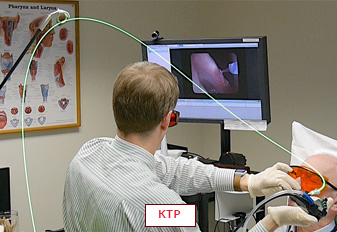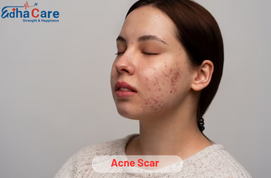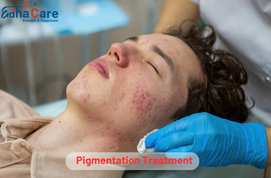Cutaneous Horn Removal

Cutaneous horn removal involves the elimination of a protruding, keratinized skin growth resembling an animal horn. Typically emerging from sun-damaged or precancerous skin lesions, these horns are composed of keratin, the same protein in nails and hair. Removal methods vary, ranging from simple shaving or trimming for smaller horns to surgical excision for larger or potentially cancerous growths. Dermatologists assess the lesion's nature before selecting the appropriate removal approach. Regular follow-ups are essential to monitor the site for any signs of recurrence or underlying skin conditions. Seeking professional guidance ensures safe and effective cutaneous horn removal.
Book an AppointmentAbout Cutaneous Horn Removal
Cutaneous horns, characterized by cone-shaped skin protrusions, often result from various underlying conditions. While the exact cause may vary, several factors contribute to the development of these keratinized growths:
-
Sun Exposure: Prolonged exposure to ultraviolet (UV) radiation, primarily from sunlight, is a significant factor. Cutaneous horns commonly emerge on sun-exposed areas, indicating a correlation between chronic sun damage and their formation.
-
Precancerous Lesions: Cutaneous horns frequently arise from precancerous or cancerous skin lesions. Conditions such as actinic keratosis, which results from cumulative sun exposure, can progress to cutaneous horns. These lesions are considered potential warning signs of underlying skin malignancies.
-
Viral Infections: Certain viral infections, such as human papillomavirus (HPV), may contribute to the development of cutaneous horns. HPV-induced lesions can exhibit excessive keratin production, leading to the formation of these horn-like growths.
-
Genetic Predisposition: While less common, there may be a genetic predisposition for the development of cutaneous horns. Individuals with a family history of such skin abnormalities might be at a higher risk.
-
Age and Gender: Cutaneous horns are more prevalent in older individuals, particularly those over 60. Additionally, there seems to be a higher incidence in men compared to women. Hormonal and age-related changes in the skin's structure may contribute to the development of these growths.
Procedure of Cutaneous Horn Removal
Cutaneous horn removal involves various procedures aimed at safely eliminating the keratinized skin growth. The specific method depends on the size, location, and underlying cause of the horn. Here are five common approaches to cutaneous horn removal:
-
Shaving or Trimming: For smaller, non-cancerous cutaneous horns, dermatologists may opt for a simple shaving or trimming procedure. This involves using a scalpel or scissors to remove the protruding horn without the need for extensive surgery.
-
Cryotherapy: Cryotherapy involves freezing the cutaneous horn with liquid nitrogen. This freezing method causes the horn to blister and eventually fall off. It is suitable for smaller horns and may require multiple sessions for complete removal.
-
Electrosurgery: Electrosurgery employs a high-frequency electrical current to cut and remove the cutaneous horn. This procedure is effective for larger horns and can help control bleeding during removal.
-
Curettage: Curettage involves scraping or scooping out the cutaneous horn using a curette, a spoon-shaped instrument. This technique is often combined with electrosurgery for thorough removal and to minimize the risk of recurrence.
-
Surgical Excision: Larger or potentially cancerous cutaneous horns may require surgical excision. In this procedure, the entire growth is cut out, and the wound is closed with stitches. The excised tissue is often sent for pathological examination to rule out any malignancy.
Require Assistance?
Get A Quick Callback From Our Healthcare Experts






